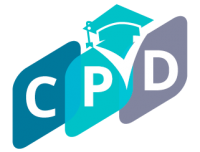Introduction:
In the realm of learning, the power of visualization cannot be overstated. Mind mapping, a visual representation of concepts and ideas, stands out as a dynamic and effective technique for enhancing understanding and recall. In this article, we will explore the benefits of mind mapping and provide insights into how this visual tool can elevate your learning experience.
- Unlocking Creativity: Mind mapping taps into the creative potential of the brain. Unlike linear note-taking, which can limit the expression of ideas, mind maps allow for a free-flowing and non-linear structure. This freedom stimulates creativity, enabling you to explore relationships between concepts, identify patterns, and generate new insights.
- Enhanced Understanding of Relationships: Traditional note-taking often fails to capture the interconnected nature of ideas. Mind mapping, with its branching structure, excels at illustrating relationships between concepts. By visually representing how ideas connect and influence each other, you gain a deeper understanding of the subject matter, fostering a more comprehensive and interconnected knowledge base.
- Improved Memory Retention: The visual and spatial organization of mind maps aligns with the way our brains naturally process information. Studies have shown that visual aids significantly enhance memory retention. When you create a mind map, you engage both the left and right hemispheres of your brain, reinforcing the information and making it more likely to be retained.
- Organizing Complex Information: Mind maps are particularly effective when dealing with complex information. Whether you’re studying intricate scientific concepts, historical events, or multifaceted theories, a mind map provides a clear and organized overview. Breaking down complex subjects into manageable components within a mind map simplifies the learning process and promotes a structured approach to studying.
- Facilitating Active Learning: The process of creating a mind map is inherently active, requiring you to engage with the material actively. As you organize information, make connections, and add details to your map, you reinforce your understanding of the content. This active learning approach not only enhances comprehension but also makes studying a more engaging and participatory experience.
- Adaptable for Various Learning Styles: People have diverse learning styles, and mind mapping accommodates this variety. Visual learners benefit from the graphic representation, kinesthetic learners engage through the physical act of creating the map, and auditory learners can complement mind maps with verbal explanations. This adaptability makes mind mapping a versatile tool suitable for a wide range of learners.
- Effective for Note-Taking and Revision: Mind maps are excellent tools for note-taking during lectures or while reading textbooks. The concise and visually appealing nature of mind maps allows you to capture key ideas quickly. Additionally, when it comes to revision, mind maps serve as efficient review tools, condensing information into a format that facilitates quick recall and reinforcement.
- Boosting Productivity: Mind mapping can enhance productivity by providing a clear structure for tasks and goals. Whether you’re planning a project, outlining an essay, or organizing your daily schedule, mind maps offer a visually stimulating and organized approach. The ability to see the big picture while maintaining focus on specific details helps streamline your thought process and improve overall productivity.
- Enhancing Critical Thinking: The interactive nature of mind mapping promotes critical thinking skills. As you create branches, add details, and make connections, you are essentially analyzing and synthesizing information. This process encourages a deeper level of thinking and enables you to approach problems and challenges from multiple perspectives.
- Digital Mind Mapping Tools: While traditional paper-and-pen mind mapping is effective, digital tools offer additional advantages. Numerous apps and software platforms provide features like easy editing, collaboration, and the ability to incorporate multimedia elements. These digital enhancements can make mind mapping even more accessible and convenient for modern learners.
Conclusion:
Mind mapping is a powerful technique that transcends traditional note-taking methods. By visually representing ideas, fostering creativity, and facilitating active engagement with the material, mind maps empower learners to grasp complex concepts, enhance memory retention, and boost overall understanding. As you incorporate mind mapping into your study routine, you not only harness the visual and organizational benefits but also embark on a journey of discovery, unlocking the full potential of your learning experience.
